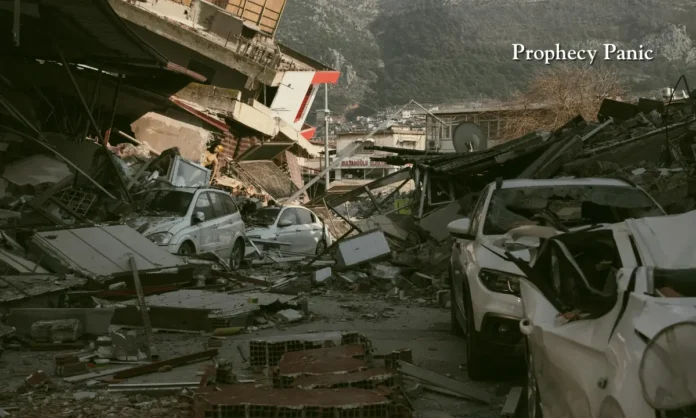Summary
- An 8.8-magnitude quake off Kamchatka on July 30, 2025 triggered tsunami warnings in Japan, reviving fear linked to the so-called “Japanese Baba Vanga earthquake tsunami” prophecy.
- Experts and the Japan Meteorological Agency firmly rejected predictive claims as pseudoscientific hoaxes, highlighting how coincidence and confirmation bias fueled anxiety.
- Tourism data from JNTO confirmed a tangible impact: visitor numbers from Hong Kong plunged even as overall arrivals climbed in May 2025, revealing how rumors can ripple into economic consequences.
Awakening the Fear: The Kamchatka Quake and a Viral Prophecy
The term Japanese Baba Vanga earthquake tsunami surged back into public discourse when an unprecedented 8.8-magnitude earthquake struck off Russia’s Kamchatka Peninsula on July 30, 2025. Japan issued tsunami alerts, urging nearly 2 million coastal residents to evacuate to higher ground and designated shelters. Predictions had warned of waves reaching up to 3 meters. The warnings were later downgraded as wave heights fell short of expectations. Japan observed only minor surges, about 60 cm in coastal zones, and recorded one injury and one fatality.
Hokkaido’s Tsunami Nightmare: 8.8 Quake Strikes
— UnreadWhy (@TheUnreadWhy) July 30, 2025
Massive waves crashed into Hokkaido after a 8.8 magnitude earthquake off Russia’s Kamchatka Peninsula. This disaster echoes the 2011 Tohoku tragedy, raising fears in Japan’s seismic zone.
UnreadWhy’s on the ground with the… pic.twitter.com/6rz7C2R3bv
That timing rekindled public attention to a widely circulated prophecy from Ryo Tatsuki’s 1999 manga The Future I Saw, which predicted a catastrophic quake and tsunami in July 2025. Despite the prophecy naming July 5, nothing occurred on that date, but the Kamchatka quake happened within the same month, reviving internet buzz around the Japanese Baba Vanga earthquake tsunami concept.
Digging Into the Main Narrative: Myth, Quake, and Public Reaction
- Unexpected resonance: A real seismic event in late July aligned, albeit loosely, with the prophecy’s timeframe.
- Wide-reaching impact: Mass evacuations, transport disruptions, and repeated media references to “Baba Vanga-style” prophecy.
- Official rejection: JMA and seismologists uniformly dismissed any link between predictions and scientific reality.
Japan’s Meteorological Agency declared such predictive narratives a hoax, stating that there is no scientific basis for specifying when and where an earthquake will strike. Ayaka Ebita, director of the JMA’s Earthquake and Tsunami Observations Division, emphasized that coincidences should not be interpreted as proof and urged public trust in empirical science. Nanyang Tech’s Dr. Shengji Wei added that current technology cannot predict earthquakes with any precision.
Emerging Insights: Underreported Facts and Market Fallout
- Seismic swarm pre-July: From June 25 to July 4, chains of over 1,198 earthquakes shook Japan’s remote Tokara Islands, culminating in a magnitude-6 tremor on July 4.
- Tourism impact: Despite Japan welcoming 3.69 million visitors in May 2025 (a 21.5 percent year-on-year increase), arrivals from Hong Kong dropped by 11.2 percent, attributed in part to prophecy-driven fear.
- Economic nuance: JNTO confirmed steady overall inbound figures but flagged the localized downturn from Hong Kong as anomalous and tied to rumor spread.
The seismic swarm and alleged “sea-roaring” described by island residents added to conspiracy theories, though authorities stressed that such swarms were minor and not predictive. Thirty-one residents sought evacuation during early July tremors near Tokara, but experts linked these to normal seismic activity rather than confirmation of prophecy.
Critical Analysis: Social Psychology Behind the Prophecy Surge
- Confirmation bias in action: When the prophecy “predicted July,” any disaster in that month gained outsized attention.
- Media amplification: Social posts and viral content described Ryo Tatsuki as Japan’s modern mystic, invoking “Baba Vanga” associations despite no formal linkage.
- Scientific literacy gap: Authorities repeatedly warned against believing pseudo-scientific forecasts. Yet trust in institutions was undermined by sensational stories.
The phenomenon illustrates how pseudo-prophecy and coincidence converge in modern media ecosystems. The resurgence of “Japanese Baba Vanga earthquake tsunami” narratives exemplifies the way speculative content becomes culturally resonant, especially when amplified across social media platforms. Experts emphasized the role of educated skepticism and robust science communication to mitigate such misinformation waves.
Future Outlook: What’s Next for Risk, Tourism, and Public Trust?
- Public preparedness remains critical: While scientists reject predictive claims, authorities may need to anticipate elevated anxiety each July.
- Tourism recovery strategies: JNTO and Japanese authorities might need targeted campaigns to rebuild confidence, especially in Hong Kong and Southeast Asian markets.
- Science engagement opportunities: The episode offers a teachable moment: improving understanding of seismic science and emergency protocols, rather than myth.
Japan continues to advance tsunami modeling and early warning systems. Beyond July 2025, lessons from this episode suggest that science-led outreach, especially in regions susceptible to rumor-driven panic, is as essential as physical preparedness. Tourism boards may consider transparency and data sharing, such as showing real-time visitor numbers to reassure potential travelers.
Wrapping It Up: Facing Fear with Facts
The revival of the Japanese Baba Vanga earthquake tsunami prophecy during the July 30, 2025 earthquake highlights a potent truth: disasters, real or rumored, can shape perception as powerfully as they hit land. While the quake aligned loosely with the prophecy’s timeframe, scientific consensus remains firm: earthquake prediction is not possible, and coincidence is not causation.
As Japan navigates the twin challenges of physical hazard and myth, it must leverage both technological vigilance and strategic communication. The ultimate test will be whether faith in science can hold firm against sensational narratives and whether the world can learn from coincidence, rather than fear it.


